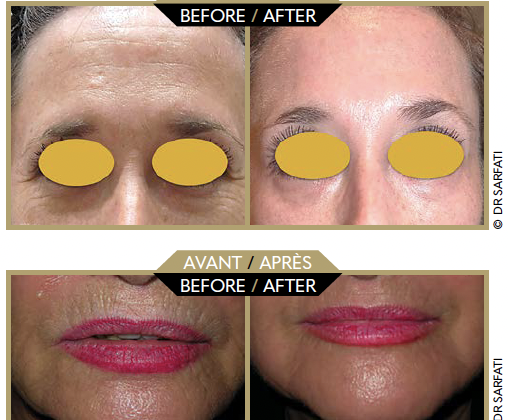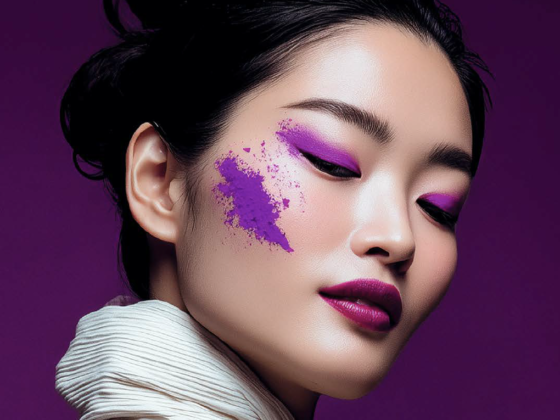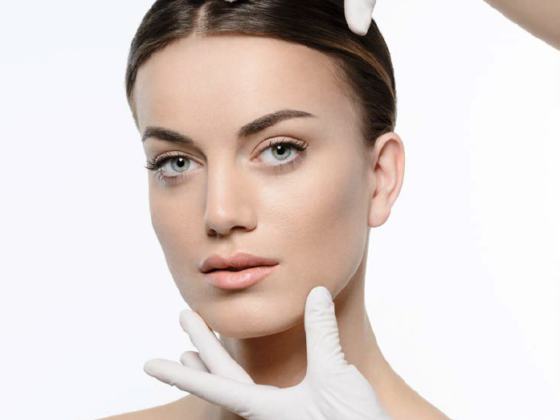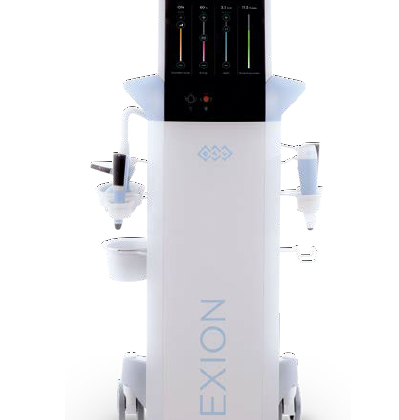Vulvar-vaginal atrophy is a very common complaint. It is usually caused by the natural aging process, especially after the menopause, due to a lack of oestrogen hormones and other sex steroids.
This is not only a problem that affects menopausal women: it can also affect younger women, for example after chemotherapy, childbirth, or when taking an unsuitable contraceptive pill. 50% of menopausal women present at least one of the clinical symptoms linked to vaginal atrophy, and these symptoms affect their quality of life, their sex life, or both. However, it is still a taboo subject, with the only conventional treatments – other than lubrication for sexual relations, or creams – is hormone replacement therapy (for those women who have no counterindications) or topical oestrogen.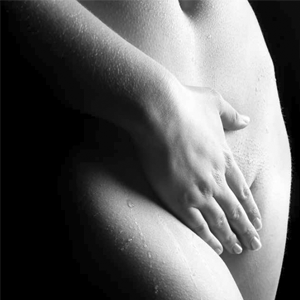
Today, we no longer talk about vulvar-vaginal atrophy, but rather the Genitourinary Syndrome of Menopause (GSM). This is a group of symptoms and signs that lead to changes in the vulva, vaginal, urethra and bladder. The symptoms are vaginal dryness, a burning sensation, irritation, less lubrication, laxity, discomfort and pain. The consequences are vaginal infections, cystitis, dysuria (painful urination) and dyspareunia (painful sexual intercourse).
The physical effects of this atrophy are a reduction in the proliferation of the epithelium, a reduction in glycogen synthesis, the elimination of the normal flora (lactobacillus) due to a toohigh pH, and a reduction in vascularisation, which all leads to a reduction in transudation and vaginal secretions.
The prevalence of vaginal dryness varies between 27 and 55%, dyspareunia between 32 and 42%, and urinary infections between 4 and 15% in menopausal women. We can measure the impact of these symptoms using two scales. The first is the Fridmann score, which rates vaginal dryness, and the second is the Female Sexual Distress Scale (revised), which measures how distressing the symptoms are for the patient.
The aim of our treatment is to regenerate the vulvar-vaginal region in order to increase vascularisation, boost new collagen production, and regenerate the nerves and tissues. We aim to hydrate and stimulate the vaginal mucous membrane, restore the tissues’ trophism, restore the bacterial flora (lactobacillus) and normal transudation, and achieve a normal pH. To do this, we have various tools available to us, such as hyaluronic acid, platelet-rich plasma (PRP) and lasers, in particular the Erbium laser, which we use in our clinic. More will also be available in the future, such as Microfats and Nanofats, which we developed over a year ago.
PRP
Platelet-rich plasma is defined as plasma harvested from autologous blood with an above-average concentration of red blood cells, which consequently means it has a high concentration of growth factors. The red blood cells contain between 50 and 80 alpha granules per unit, each granule containing more than 30 bio-active proteins, including certain growth factors that have been the subject of studies. These growth factors are injected into any tissues that need regenerating. The principal growth factors are: GD, which allows for cell proliferation and migration, and type I and II collagen synthesis; PDGF, which allows for the expression and interaction with other growth factors and cell proliferation; IGF I, which allows for cell proliferation and migration, the synthesis of the extracellular matrix and the reshaping and synthesis of collagen. VEGF is one of the most important growth factors because it allows for neovascularisation, angiogenesis and increases capillary permeability. EGF is important for cell proliferation and chemotactism. BMP-12 increases type I collagen expression, and stimulates collagen production and fibroblast multiplication. After the blood has been put through a centrifuge, we count the cells so that we can be sure we have good quality PRP. We usually need a minimum of 200,000 red blood cells per millilitre for effective PRP. We transfer the platelet-rich plasma into 1ml syringes. Using 32G mesotherapy needles, it is reinjected into the back and side walls of the vaginal, very superficially into the first two centimetres. We also inject the vaginal entrance, the inner lips and the outer lips, if required. We carry out three sessions, a month apart. The results are seen 15 days after the first session and reach their peak after the third session. We recommend a top-up session every three months.
Erbium lasers
If the results of the PRP are not satisfactory, or if the patient does not want to undergo this procedure, we use an Erbium laser: this is a non-invasive and non-ablative 2940nm laser that emits surges of heat onto the mucous membrane. It produces the optimal Er:YAG infrared 2940nm wavelength. It emits controlled sequential heat that enables us to diffuse the heat into the tissues. The Erbium laser is a non-ablative laser with a photothermal effect. The effect of photothermal lasers on the tissues results in the light being converted into heat, this heat being transferred, and a tissue reaction caused by the temperature and duration of the heat. Lasers have a great affinity for tissue water, and the 2940nm Erbium laser’s affinity is ten times greater than other lasers. The very short delay before the tissue is vaporised does not allow the heat to be diffused into the surrounding area. Precise sequences of heat are delivered into the tissues to heat the collagen in the different mucous planes, without overheating the surface. Studies have shown that, to shorten the collagen fibrils without irreversibly denaturing their structure, the temperature should not exceed 60-700. The exposed collagen first retracts and contracts, then a restructuring and neocollagenesis process begins. Six months after treatment, this new collagen has made the tissues firmer and more elastic.
There are four different programmes:
- The first programme is for treating urinary incontinence during exertion, whether light, moderate or mixed. The thermal effect is delivered into the tissue of the mucous membrane in the vaginal entrance and urethral orifice, as well as to the front wall of the vagina. The new and restructured collagen restores normal continence. For most patients, one session is enough, but a second session can be carried out a month later, if required. 90% of patients with mild incontinence and 76% of patents with moderate incontinence only require one session. After a year, 95% of patients no longer suffer from incontinence. Measurements taken using a cotton bud, while performing the Vasalva manoeuvre, show an average reduction of 20° in the angle of the cotton bud, which backs up the clinical improvements.
- The second programme is for treating vaginal slackening. It involves applying a non-ablative photothermal laser to the vaginal canal. The treatment is based on the thermal effect generated by the laser on the vaginal tissue, which causes the collagen to be restructured and boosts the synthesis of new collagen fibres. The final result of this new collagen production is the tightening of the vaginal canal. The laser enables us to deliver an energy beam onto the vaginal mucous membrane and the collagen-rich pelvic aponeurosis. For most patients, one session is enough to achieve significant results in the vaginal canal. If required, a second session is carried out a month after the first.
- The third programme, for treating pelvic organ prolapse, also uses the non-ablative thermal effects of the Er:YAG 2940nm laser to stimulate the production of new collagen fibres and restructure the area. The protocol has three stages: treating the whole vaginal canal, treating the front wall, and treating the entrance. In general, three sessions, spaced a month apart, are required.
- The last programme treats vaginal atrophy. The treatment uses the thermal effects of the laser to stimulate collagen and boost its synthesis. It stimulates angiogenesis and fibroblast activity with controlled heat. The final result is an increase in the epithelium, the revascularisation of the lamina propria, and the restoration of the glycogen levels. Two sessions, spaced a month apart, are usually required and the positive effects usually last around 6 months. We suggest having a top-up session every three months. This is a great advance for patients who are unable to have hormonal treatments following chemotherapy or childbirth. They are non-invasive, pain-free procedures with no side-effects. The results of the Fridmann and FSD-scale after PRP or Erbium laser treatments show a significant improvement in symptoms, with particular benefits for vaginal dryness, pH and dyspareunia. The patients’ mucous membrane is rehydrated, their vaginal secretions, cystitis and fungal infections disappear, their vaginal laxity is reduced, and they no longer suffer from urinary incontinence. No complications or undesirable side-effects have been observed.
Today, there are many ways to rejuvenate the intimate area, but women need to be better informed and the taboos need to disappear. It is not only for the good of the woman, but also for her partner. PRP and Erbium lasers yield good results, and are a safe way of giving women back the comfort, serenity and well-being that they should never have lost.
Sophie Menkes :
Aesthetic physician, Medical Director at Forever Institut. Geneva (Switzlerland), specialist in Aesthetic Gynecology, Regenerative Medicine and Internal Medicine.. Physician trainer HA and Toxin for Allergan, physician trainer. Ulthera and Cellfina for Merz, physician trainer for Aesthetic Gynecology, Microfat and Nanofat grafting Medical speaker at international courses and congress.







